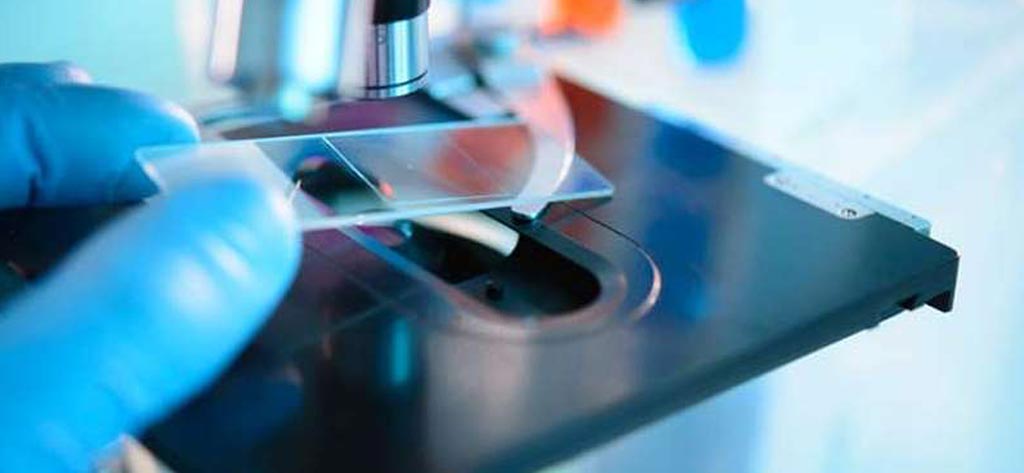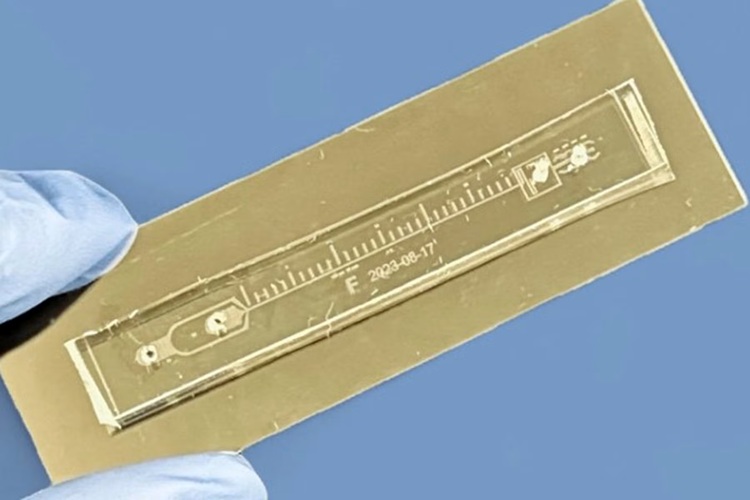COVID-19 Testing Demand to Help In-Vitro Diagnostics (IVD) Market Reach USD 118.5 Billion by 2027
|
By LabMedica International staff writers Posted on 22 Jan 2021 |

Illustration
The global in-vitro diagnostics (IVD) market is projected to register a CAGR of 7% from 2020 to 2027 to reach USD 118.5 billion by 2027, driven mainly by the increased demand for diagnostic testing for understanding and managing infectious diseases, such as COVID-19.
These are the latest findings of Meticulous Research (Pune, Maharashtra, India), a market intelligence provider.
The epidemiological burden of infectious diseases worldwide has increased in the past few years. During the past few decades, various infections such as severe acute respiratory syndrome (SARS), Middle East respiratory syndrome (MERS), Ebola, chikungunya, avian flu, swine flu, and Zika have emerged as major threats to public health. The outbreak of the coronavirus (COVID-19) disease is a recent example. Although healthcare professionals are working tirelessly on the frontlines to fight the pandemic, it is equally important to minimize the spread of the disease by preparing kits for early diagnosis. Testing is an important tool for understanding and managing the coronavirus pandemic. Multiple diagnostic test manufacturers have developed and started offering various assays & kits for diagnosis to mitigate shortages of laboratory-based molecular testing capacity and reagents. These simple test kits detect proteins from the COVID-19 virus in respiratory samples (e.g., sputum, throat swab), blood, or serum of human antibodies generated in response to an infection. Thus, the increasing prevalence of infectious diseases across the globe has significantly boosted the need for diagnosing diseases, which is expected to drive the growth of the IVD market during the forecast period.
The outbreak of the COVID-19 pandemic has created immense opportunities for the IVD market as testing has emerged as one of the greatest solutions in managing the pandemic. Though several trials for candidate vaccines and potential therapies are underway, there is currently no cure, and in the absence of effective therapies or vaccines, diagnostic testing has become a valuable tool amidst the pandemic. Different tests serve different purposes in the management of the pandemic: while viral RNA testing enables the point-of-care, acute detection of those infected with SARS-CoV-2, in time, the potential of immunological tests for contact tracing will be increasingly valued, with efforts to produce them on a large scale already being ramped up. Thus, the pandemic has led to the development of new kits and assays by the key manufacturers. This increase in newer diagnostic kits will boost the adoption of IVD, thereby providing lucrative opportunities for the growth of the IVD market over the coming years.
Based on technology, the immunoassay segment is expected to dominate the global IVD market due to advantages offered by immunoassays such as specificity, high-throughput, high sensitivity, and low costs. The increasing use of immunoassays in POC & infectious disease testing owing to the coronavirus pandemic, development of novel tests, increasing usage of miniaturized devices, and rising demand for immunoassay-based tests are the other factors driving the growth of the immunoassay segment.
Based on product and solution, the consumables segment is expected to register the fastest growth during the forecast period, led by the rising need to identify diseases, the growing use of kits and reagents to identify organisms causing various diseases, and low costs. The frequent use of assays & kits for the detection of various chronic diseases, commercial availability of a diverse range of reagents, and increased demand for COVID-19 testing products are expected to further propel the growth of the consumables segment during the forecast period.
Based on application, the infectious diseases segment is estimated to account for the largest share of the global IVD market owing to the increasing global prevalence of infectious diseases, growing awareness about the importance of early diagnosis using specific diagnostic tests, and growth in funding for research on infectious disease diagnostics.
Based on end user, the diagnostic laboratories segment is estimated to account for the largest share of the global IVD market. The rising number of accredited clinical laboratories, collaborations, partnerships, and other strategies adopted by the key players, and an increase in the volume of testing carried out in diagnostic laboratories owing to the COVID-19 outbreak are some of the key factors supporting the growth of the diagnostic laboratories segment.
Related Links:
Meticulous Research
These are the latest findings of Meticulous Research (Pune, Maharashtra, India), a market intelligence provider.
The epidemiological burden of infectious diseases worldwide has increased in the past few years. During the past few decades, various infections such as severe acute respiratory syndrome (SARS), Middle East respiratory syndrome (MERS), Ebola, chikungunya, avian flu, swine flu, and Zika have emerged as major threats to public health. The outbreak of the coronavirus (COVID-19) disease is a recent example. Although healthcare professionals are working tirelessly on the frontlines to fight the pandemic, it is equally important to minimize the spread of the disease by preparing kits for early diagnosis. Testing is an important tool for understanding and managing the coronavirus pandemic. Multiple diagnostic test manufacturers have developed and started offering various assays & kits for diagnosis to mitigate shortages of laboratory-based molecular testing capacity and reagents. These simple test kits detect proteins from the COVID-19 virus in respiratory samples (e.g., sputum, throat swab), blood, or serum of human antibodies generated in response to an infection. Thus, the increasing prevalence of infectious diseases across the globe has significantly boosted the need for diagnosing diseases, which is expected to drive the growth of the IVD market during the forecast period.
The outbreak of the COVID-19 pandemic has created immense opportunities for the IVD market as testing has emerged as one of the greatest solutions in managing the pandemic. Though several trials for candidate vaccines and potential therapies are underway, there is currently no cure, and in the absence of effective therapies or vaccines, diagnostic testing has become a valuable tool amidst the pandemic. Different tests serve different purposes in the management of the pandemic: while viral RNA testing enables the point-of-care, acute detection of those infected with SARS-CoV-2, in time, the potential of immunological tests for contact tracing will be increasingly valued, with efforts to produce them on a large scale already being ramped up. Thus, the pandemic has led to the development of new kits and assays by the key manufacturers. This increase in newer diagnostic kits will boost the adoption of IVD, thereby providing lucrative opportunities for the growth of the IVD market over the coming years.
Based on technology, the immunoassay segment is expected to dominate the global IVD market due to advantages offered by immunoassays such as specificity, high-throughput, high sensitivity, and low costs. The increasing use of immunoassays in POC & infectious disease testing owing to the coronavirus pandemic, development of novel tests, increasing usage of miniaturized devices, and rising demand for immunoassay-based tests are the other factors driving the growth of the immunoassay segment.
Based on product and solution, the consumables segment is expected to register the fastest growth during the forecast period, led by the rising need to identify diseases, the growing use of kits and reagents to identify organisms causing various diseases, and low costs. The frequent use of assays & kits for the detection of various chronic diseases, commercial availability of a diverse range of reagents, and increased demand for COVID-19 testing products are expected to further propel the growth of the consumables segment during the forecast period.
Based on application, the infectious diseases segment is estimated to account for the largest share of the global IVD market owing to the increasing global prevalence of infectious diseases, growing awareness about the importance of early diagnosis using specific diagnostic tests, and growth in funding for research on infectious disease diagnostics.
Based on end user, the diagnostic laboratories segment is estimated to account for the largest share of the global IVD market. The rising number of accredited clinical laboratories, collaborations, partnerships, and other strategies adopted by the key players, and an increase in the volume of testing carried out in diagnostic laboratories owing to the COVID-19 outbreak are some of the key factors supporting the growth of the diagnostic laboratories segment.
Related Links:
Meticulous Research
Latest Industry News
- Abbott Acquires Cancer-Screening Company Exact Sciences
- Roche and Freenome Collaborate to Develop Cancer Screening Tests
- Co-Diagnostics Forms New Business Unit to Develop AI-Powered Diagnostics
- Qiagen Acquires Single-Cell Omics Firm Parse Biosciences
- Puritan Medical Products Showcasing Innovation at AMP2025 in Boston
- Advanced Instruments Merged Under Nova Biomedical Name
- Bio-Rad and Biodesix Partner to Develop Droplet Digital PCR High Complexity Assays
- Hologic to be Acquired by Blackstone and TPG
- Bio-Techne and Oxford Nanopore to Accelerate Development of Genetics Portfolio
- Terumo BCT and Hemex Health Collaborate to Improve Access to Testing for Hemoglobin Disorders
- Revvity and Sanofi Collaborate on Program to Revolutionize Early Detection of Type 1 Diabetes
- GSI Group Acquires Blood Processing Equipment Manufacturer GenesisBPS
- ELITech and Hitachi High-Tech to Develop Automated PCR Testing System for Infectious Diseases
- Lumiquick Acquires Aoxre to Expand Global IVD and Research Capabilities
- Lunit and Agilent Partner to Develop AI-Powered Cancer Diagnostics
- Qiagen and Oxford Gene Technology Partner on Sequencing Panel Interpretation
Channels
Clinical Chemistry
view channel
Chemical Imaging Probe Could Track and Treat Prostate Cancer
Prostate cancer remains a leading cause of illness and death among men, with many patients eventually developing resistance to standard hormone-blocking therapies. These drugs often lose effectiveness... Read more
Mismatch Between Two Common Kidney Function Tests Indicates Serious Health Problems
Creatinine has long been the standard for measuring kidney filtration, while cystatin C — a protein produced by all human cells — has been recommended as a complementary marker because it is influenced... Read moreMolecular Diagnostics
view channel
New Genetic Test Enables Faster Diagnosis of Rare Diseases
Rare disease diagnosis often involves a long and uncertain search for the underlying genetic cause. Traditional testing requires multiple separate analyses, although many patients remain without answers.... Read more
Urine Test Detects Inherited Neuropathy Missed by Genetic Screening
Sorbitol dehydrogenase (SORD)-related neuropathy is one of the most common inherited nerve disorders, yet diagnosis often lags because current genetic screens frequently miss the causal gene.... Read moreHematology
view channel
Platelet Activity Blood Test in Middle Age Could Identify Early Alzheimer’s Risk
Early detection of Alzheimer’s disease remains one of the biggest unmet needs in neurology, particularly because the biological changes underlying the disorder begin decades before memory symptoms appear.... Read more
Microvesicles Measurement Could Detect Vascular Injury in Sickle Cell Disease Patients
Assessing disease severity in sickle cell disease (SCD) remains challenging, especially when trying to predict hemolysis, vascular injury, and risk of complications such as vaso-occlusive crises.... Read more
ADLM’s New Coagulation Testing Guidance to Improve Care for Patients on Blood Thinners
Direct oral anticoagulants (DOACs) are one of the most common types of blood thinners. Patients take them to prevent a host of complications that could arise from blood clotting, including stroke, deep... Read moreImmunology
view channel
Chip Captures Cancer Cells from Blood to Help Select Right Breast Cancer Treatment
Ductal carcinoma in situ (DCIS) accounts for about a quarter of all breast cancer cases and generally carries a good prognosis. This non-invasive form of the disease may or may not become life-threatening.... Read more
Blood-Based Liquid Biopsy Model Analyzes Immunotherapy Effectiveness
Immunotherapy has revolutionized cancer care by harnessing the immune system to fight tumors, yet predicting who will benefit remains a major challenge. Many patients undergo costly and taxing treatment... Read moreMicrobiology
view channel
Rapid Assay Identifies Bloodstream Infection Pathogens Directly from Patient Samples
Bloodstream infections in sepsis progress quickly and demand rapid, precise diagnosis. Current blood-culture methods often take one to five days to identify the pathogen, leaving clinicians to treat blindly... Read more
Blood-Based Molecular Signatures to Enable Rapid EPTB Diagnosis
Extrapulmonary tuberculosis (EPTB) remains difficult to diagnose and treat because it spreads beyond the lungs and lacks easily accessible biomarkers. Despite TB infecting 10 million people yearly, the... Read more
15-Minute Blood Test Diagnoses Life-Threatening Infections in Children
Distinguishing minor childhood illnesses from potentially life-threatening infections such as sepsis or meningitis remains a major challenge in emergency care. Traditional tests can take hours, leaving... Read more
High-Throughput Enteric Panels Detect Multiple GI Bacterial Infections from Single Stool Swab Sample
Gastrointestinal (GI) infections are among the most common causes of illness worldwide, leading to over 1.7 million deaths annually and placing a heavy burden on healthcare systems. Conventional diagnostic... Read morePathology
view channel
Blood Test and Sputum Analysis Predict Acute COPD Exacerbation
Chronic obstructive pulmonary disease (COPD) remains a major contributor to global illness, largely driven by cigarette smoking and marked by irreversible lung damage. Acute exacerbations can accelerate... Read more
AI Tool to Transform Skin Cancer Detection with Near-Perfect Accuracy
Melanoma continues to be one of the most difficult skin cancers to diagnose because it often resembles harmless moles or benign lesions. Traditional AI tools depend heavily on dermoscopic images alone,... Read more
Unique Immune Signatures Distinguish Rare Autoimmune Condition from Multiple Sclerosis
Myelin oligodendrocyte glycoprotein antibody–associated disease (MOGAD) is a rare autoimmune disorder in which the immune system attacks the myelin sheath in the central nervous system. Although symptoms... Read moreTechnology
view channel
AI Saliva Sensor Enables Early Detection of Head and Neck Cancer
Early detection of head and neck cancer remains difficult because the disease produces few or no symptoms in its earliest stages, and lesions often lie deep within the head or neck, where biopsy or endoscopy... Read more
AI-Powered Biosensor Technology to Enable Breath Test for Lung Cancer Detection
Detecting lung cancer early remains one of the biggest challenges in oncology, largely because current tools are invasive, expensive, or unable to identify the disease in its earliest phases.... Read moreIndustry
view channel
Abbott Acquires Cancer-Screening Company Exact Sciences
Abbott (Abbott Park, IL, USA) has entered into a definitive agreement to acquire Exact Sciences (Madison, WI, USA), enabling it to enter and lead in fast-growing cancer diagnostics segments.... Read more
























